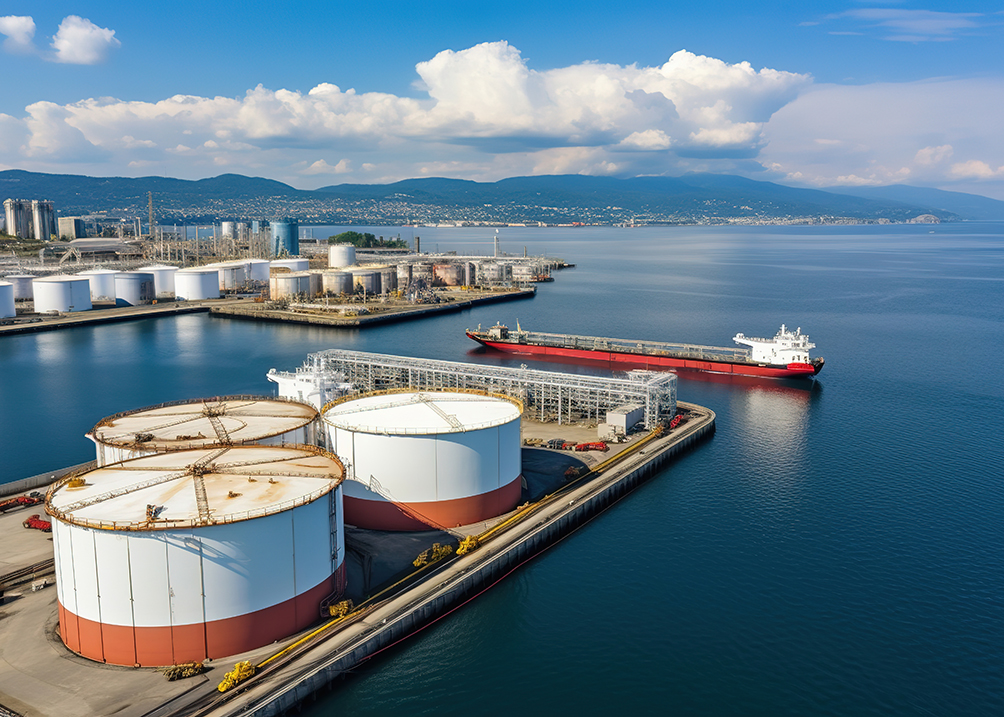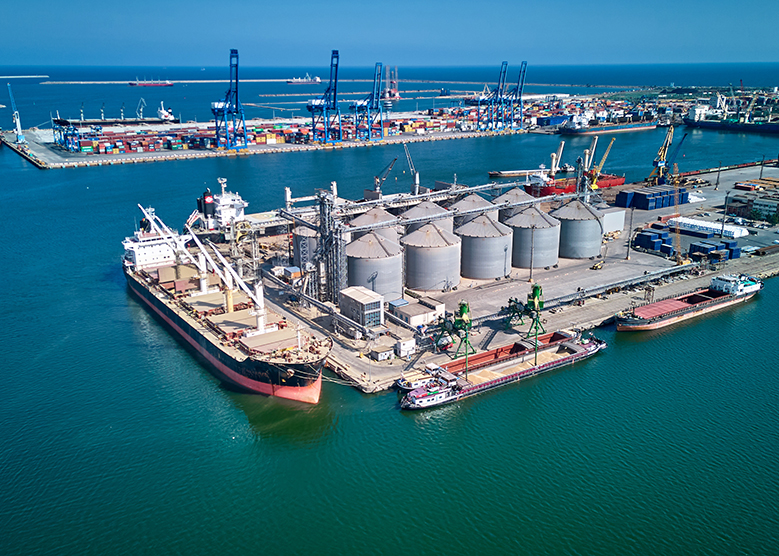
FuelEU Maritime – Compliance steps for Shipping Operators


FuelEU Maritime is a pivotal regulation aimed at decarbonizing the maritime industry, aligning with the EU’s overarching climate objectives. This guide provides advanced insights and specific operational details essential for shipping companies to ensure compliance effectively and strategically plan their operations.
The FuelEU Maritime Regulation, as outlined in Regulation (EU) 2023/1805, aims to reduce the greenhouse gas (GHG) intensity of maritime fuels, thus contributing to the EU’s goal of achieving climate neutrality by 2050. This regulation mandates the use of low-GHG fuels and zero-emission technologies to meet prescribed GHG intensity limits.
FuelEU Maritime applies to ships above 5,000 gross tonnage (GT) engaged in commercial activities and calling at ports within the European Union (EU) and European Economic Area (EEA). It covers both intra-EU voyages and voyages between EU ports and non-EU ports.
According to FuelEU Maritime Regulation (EU) 2023/1805, specific provisions address the treatment of ships sold during the reporting year to ensure accurate monitoring and reporting of fuel consumption and GHG emissions. These provisions ensure that both the previous and new owners are held accountable for their respective periods of ownership.
When a ship is sold during the reporting period, the regulation outlines specific steps to handle the data and compliance obligations. According to Article 15, Paragraph 4 of Regulation (EU) 2023/1805:
The company transferring the ship must notify the verifier of the information referred to in Paragraph 1 for the time during which it operated the ship. This notification should include all relevant data on fuel consumption, GHG emissions, and any other required metrics for the period the ship was under its operation.
The information provided by the transferring company must be verified and recorded in the FuelEU database by the verifier who performed verification activities for the ship under the transferring company. This process should be carried out as close as practical to the transfer date and must be completed no later than one month after the transfer.
The company responsible for the ship’s operation on December 31 of the reporting period will be responsible for the ship’s compliance with the requirements for the entire reporting period, even if there were multiple transfers during that time. This ensures continuous compliance and accurate reporting throughout the year, regardless of changes in ownership.
Consider a ship that is sold on June 30 within the reporting year:
By adhering to these provisions, the regulation ensures that the ship’s fuel consumption and GHG emissions are accurately tracked and reported, maintaining regulatory compliance throughout any ownership transitions.
When a ship is sold during the reporting year, the responsibility for monitoring, reporting, and verifying (MRV) fuel consumption and GHG emissions is divided between the previous and new owners based on their periods of ownership. Each owner must ensure the completeness and accuracy of the data for their respective ownership periods.
Both the previous and new owners must submit detailed reports covering their ownership periods. These reports must include:
Consider a ship sold on June 30th within the reporting year:
Impact: By dividing the reporting responsibilities, both owners are accountable for their respective periods, ensuring comprehensive and accurate data submission for the entire reporting year. This method maintains the integrity of the monitoring and reporting process and ensures compliance with FuelEU Maritime regulations.
Benefit: This approach provides a clear framework for handling ship ownership changes within the reporting year, reducing the risk of non-compliance due to data gaps or inaccuracies. It ensures that the ship’s GHG emissions and fuel consumption are accurately recorded and reported, maintaining regulatory compliance, and avoiding potential penalties.
Ships engaged in international voyages and utilizing renewable and low-carbon fuels throughout their journey can allocate these fuels in the GHG intensity calculation for the corresponding reporting period. According to FuelEU Article 10, all renewable and low-carbon fuels that meet the relevant criteria can be considered as contributing to half of the energy used during these international voyages. This allocation is allowed up to the maximum energy amount specified under FuelEU Maritime Article 2(1)(d). This provision also applies to similar fuels used in voyages arriving at or departing from ports located in outermost regions under the authority of a Member State, as per FuelEU Article 2(4).
While fuel consumption must be reported on a “per voyage” basis, the average yearly GHG intensity of the energy used onboard is calculated based on the total mass of fuel consumed per energy consumer annually.

Under the FuelEU Maritime regulation, ships utilizing electric propulsion systems, especially those powered by renewable energy sources, can achieve significant advantages in meeting GHG intensity targets. Electric propulsion systems are recognized for their potential to deliver zero GHG emissions during operation, which directly contributes to compliance with GHG intensity limits and can reduce the need for derogations related to Onshore Power Supply (OPS) requirements.
Electric propulsion systems eliminate the emissions associated with conventional fuel combustion, thereby offering a straightforward pathway to achieving zero-emission voyages. This not only facilitates compliance with the stringent GHG intensity thresholds set by FuelEU Maritime but also positions ships favorably for future regulatory changes aiming for even lower emissions.
Electric propulsion provides operational flexibility, allowing ships to switch to zero-emission operations, particularly in emission control areas (ECAs) and when berthed in ports that require OPS connections. This flexibility is crucial for maintaining compliance with both current and anticipated future regulations.
Consider a ship equipped with a hybrid propulsion system that can switch between conventional fuel engines and electric propulsion powered by onboard batteries charged with renewable energy sources:
By leveraging electric propulsion, shipping operators can effectively align with the FuelEU Maritime’s regulatory framework, ensuring compliance while also benefiting from enhanced operational efficiency and sustainability.
Ice class ships, specifically designed for operation in icy waters, may be exempt from certain regulatory requirements due to their unique operational and structural characteristics. These vessels typically have more robust propulsion and hull structures, which impact their energy efficiency and GHG intensity. Regulation (EU) 2023/1805 provides specific exemptions and adjustments for these ships to account for their additional energy consumption:
Ships may claim derogation if connecting to Onshore Power Supply (OPS) poses risks to the safety of the ship, crew, or port infrastructure, or if it interferes with the ship’s navigational capabilities.
Ships engaged in operations necessitating continuous power for essential equipment that cannot be supported by OPS are eligible for specific exceptions outlined in Regulation (EU) 2023/1805. Paragraph 5 of Article 6 details the following concessions:
These exceptions ensure that ships can maintain essential operations when OPS is not feasible or available.
Penalties for non-compliance under the FuelEU Maritime Regulation are calculated based on specific criteria to ensure deterrence and enforce compliance. The penalties cover various aspects of non-compliance, including GHG intensity, RFNBO sub target, OPS requirements, and consecutive non-compliance periods.
Penalties for non-compliance with GHG intensity are determined by the excess GHG emissions relative to the required intensity. The penalty calculation is detailed in Article 23 and Annex IV of Regulation (EU) 2023/1805.
For compliance deficits concerning the RFNBO (Renewable Fuels of Non-Biological Origin) sub target, the penalty is calculated as follows:
The compliance balance for RFNBO (CBRFNBO) is divided by 41,000 and then multiplied by the price difference (Pd) to determine the penalty amount as referred to in Article 23(2).
Penalties for non-compliant port calls regarding the use of onshore power supply (OPS) are based on the ship’s electrical power demand at berth and the duration of non-compliance.
FuelEU Penalty (OPS) = Total Electrical Power Demand x Total hours at Berth in Non-compliance x Average Electricity Price in Union x 2
Details: The penalty is proportional to the cost of using the electricity and is designed to have a dissuasive effect against the use of more polluting energy sources. This is expressed in a fixed amount in EUR, based on the average electricity price in the Union for non-household consumers, multiplied by a factor of two to account for additional charges related to providing the service, including connection costs and investment recovery elements.
If a ship has a compliance deficit for two or more consecutive reporting periods, the penalty amount is increased to enforce compliance.
where n is the number of consecutive reporting periods.
These penalties are intended to be stringent and dissuasive, ensuring a level playing field in the maritime sector and driving compliance with the FuelEU Maritime Regulation.
Ships must submit an annual report, verified by an accredited verifier, which includes:
This report must be comprehensive to avoid discrepancies that could lead to non-compliance penalties.
Certain ships, such as those engaged in non-commercial activities (e.g., military vessels), are exempt. Additionally, voyages not involving EU/EEA ports are excluded from the regulation’s scope, providing some relief for specific operational routes.
Normec Verifavia has been at the forefront of emissions verification since 2018. Accredited by COFRAC under ISO 17029 and by UKAS for UK MRV, we have verified emissions for over 2,000 ships for over 300 companies across 40 countries under various regulations, including EU ETS, EU MRV, UK MRV, IMO DCS, CII and FuelEU Maritime. Our extensive experience ensures that we deliver the highest standards of transparency and reliability in GHG emissions verification.
Ensuring compliance with FuelEU Maritime demands a thorough understanding of detailed regulatory provisions and advanced compliance strategies. By leveraging our expertise, shipping companies can navigate these complexities effectively, ensuring both compliance and operational efficiency. Normec Verifavia for comprehensive verification services to ensure your fleet remains compliant with the latest maritime regulations.